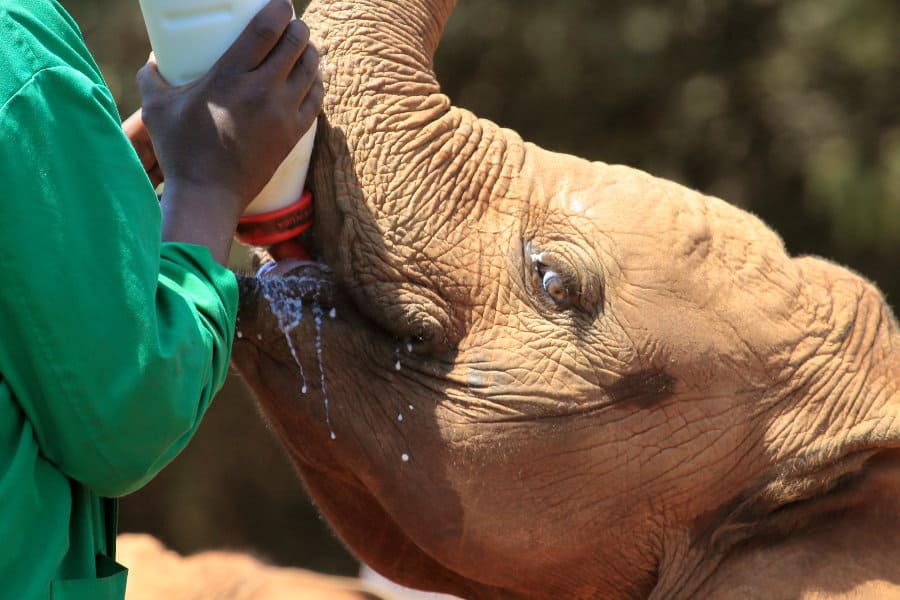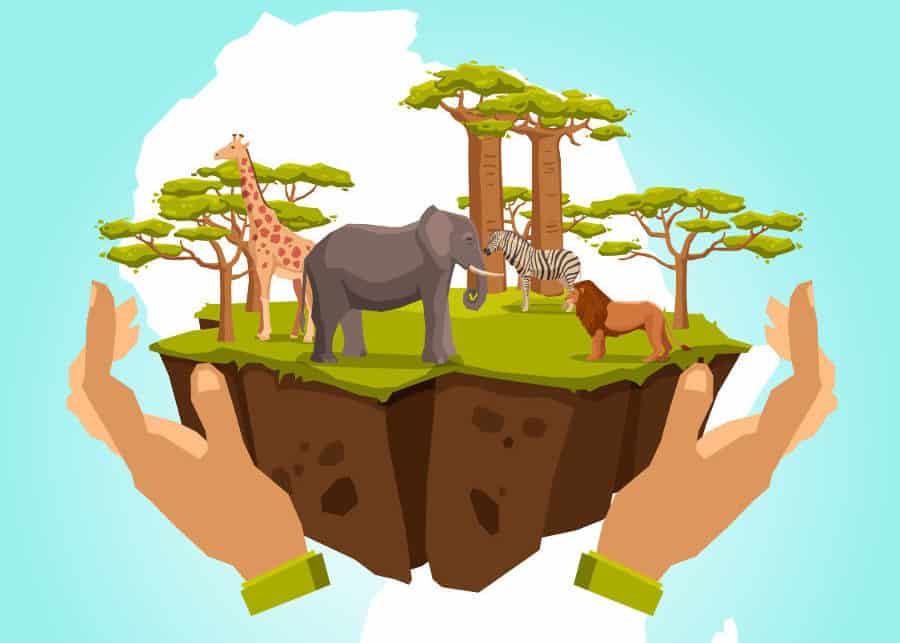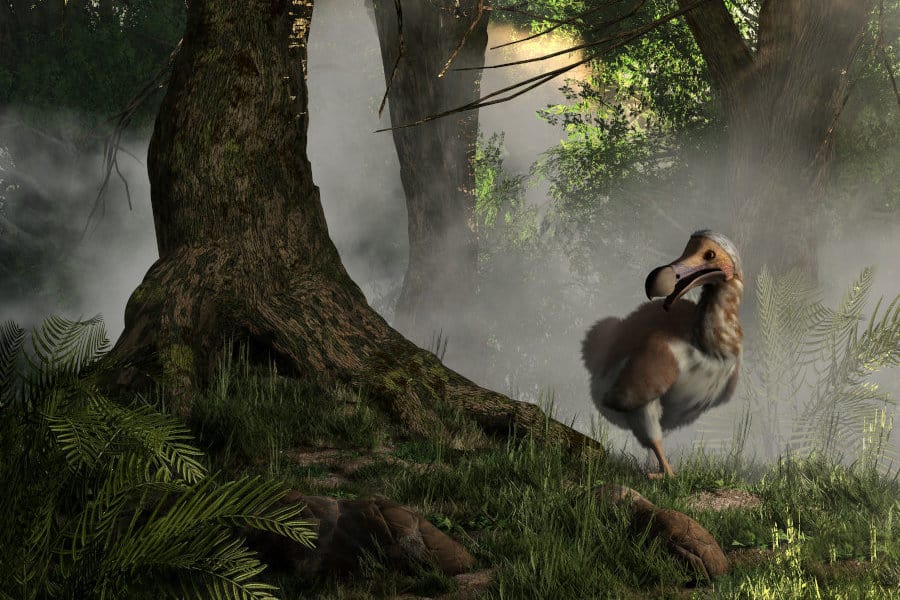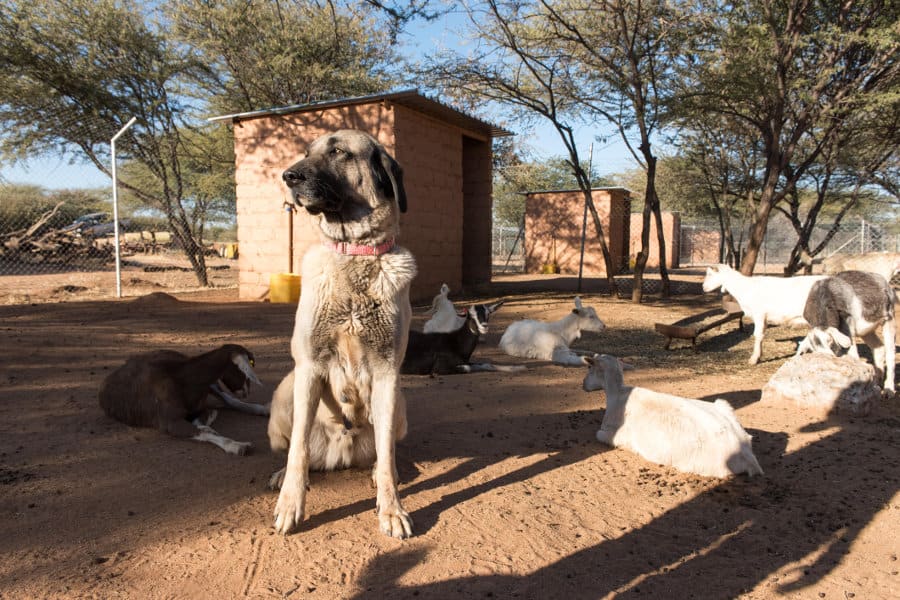On a previous overland trip, I was fortunate enough to visit the David Sheldrick Wildlife Trust (DSWT) – a sanctuary for young elephants and rhinos in Nairobi, Kenya.
It’s a small charity established in 1977 in memory of the famous naturalist, David Leslie William Sheldrick. David Sheldrick is the founder of Tsavo East National Park, one of the oldest and largest parks in the country.
The trust was established by his widow, Daphne Sheldrick, and is best known for its elephant orphanage project.
About the DSWT Orphanage

Located on the outskirts of Nairobi city center and bordering the Nairobi National Park, the orphanage is a comfortable home for young, orphaned elephants.
Though elephants are their primary focus, the orphanage is also a sanctuary for some rescued rhinos and giraffes. It was the first elephant orphanage in the world, and is the most successful of its kind.
Since its humble beginnings, the David Sheldrick Trust has saved and raised over 250 orphaned elephants. And about 150 of these rescued animals now roam free in the wild.
The elephants here are young. From new babies to two-year-old toddlers, they’re all approachable and adorable.

Stories of the Sheldrick Elephants
Most animals that end up at the trust’s Nairobi elephant orphanage have a painful past. Their stories are all different, but they share one thing in common. They have been separated from their parents through death or other circumstances. Leaving them alone in the wild.
Many parents are gunned down by poachers, others die from starvation or dehydration, among a variety of other sad causes.
The orphaned elephants are tracked down and transported to the orphanage, where they can be cared for until they’re ready to return to the wild.

The Essential Role of the Elephant Orphanage Keepers
Elephants are highly sociable animals that become vulnerable once they are forcibly removed from their family structure. This is, in part, where the role of the local keepers becomes essential. They accompany and care for the pachyderms during the first two years of their existence.
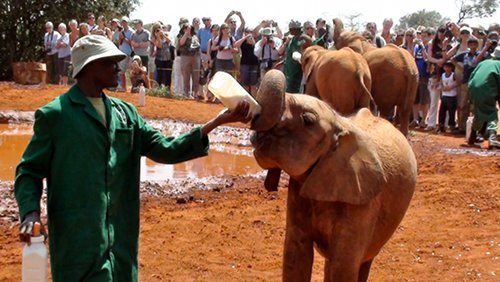
During that time, the elephants slowly but surely learn how to live, and the keepers form an intimate relationship with each one.
The babies need to be fed every three hours, day and night, with formula milk. So the dedicated keepers are with the orphaned elephants around the clock.
The keepers even sleep in the stables with the young elephants to help keep up the demanding feeding routine.
Funnily enough, some of the younger ones get fed through a blanket, which acts as the fictive ‘belly’ of the mother elephant.
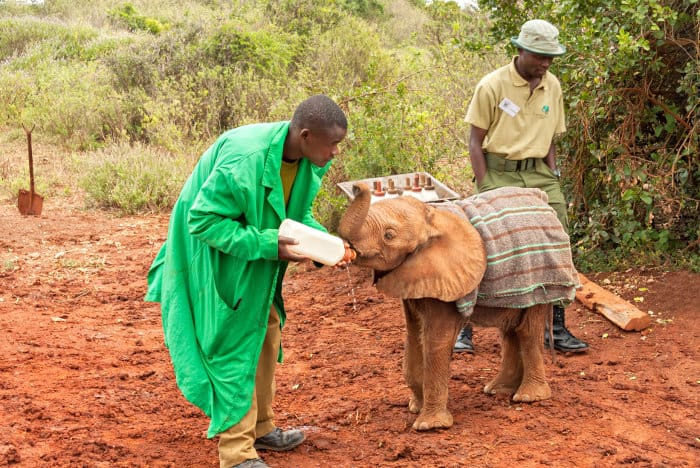
But the trust is careful not to let the elephants get too attached to any keeper in particular. So they rotate which elephant they’re caring for on a daily basis, and take turns to ensure the animals have company throughout the day.
The elephants get to know every one of the keepers on a personal basis during their time at the orphanage. Forming bonds which are incredibly strong and long-lasting.
On multiple occasions, wild elephants who were once residents at the orphanage have returned to visit the charity’s Ithumba Rehabilitation Centre in Tsavo. Bringing with them their wild born babies to meet their former keepers.
This just goes to show the incredible sociability, intelligence, and emotional capacity of these wonderful creatures.

My David Sheldrick Wildlife Trust Visit
The David Sheldrick elephant orphanage in Nairobi is open to the public for one hour each day. The doors open at 11 am, and close at midday. This corresponds with feeding time for the ellies as well as their daily mud bath.
We were lucky enough to experience this and I captured the moment on camera. Enjoy! 😉
NB: Watch the footage until the very end. Simply hilarious stuff! 🙂
A small (500 Kenya shilling / $7 USD) fee is charged upon entrance. This money goes toward funding the operation, thereby helping to create a happy, safe, and sustainable home for the orphaned animals. Of course, additional donations are welcomed, so you may consider contributing more while visiting.
It was an incredible experience getting so close to the elephants. This kind of intimate interaction is increasingly rare, particularly under such heartwarming conditions.
Life After the Sheldrick Elephant Orphanage

Eventually, each of the animals must move on from the orphanage. They’re transferred to the trust’s rehabilitation centers in Tsavo once they are physically and psychologically ready. And they have to be at least two years old before they make the move.
Once they’ve been transferred, the elephants enjoy a bit more freedom in Tsavo. They roam free in the bush during the day and snuggle up in stockades at night in order to keep them safe from predators. Eventually, they graduate from here and are released into the surrounding wilderness.
Elephant Poaching – A Major Cause of the Problem
Ivory is worth an unbelievable amount of money on the black market, and poachers are determined to hunt down helpless elephants for financial rewards. Almost one-tenth of Africa’s wild elephants are poached for their ivory tusks each year.
Tens of thousands of elephant lives are taken, leaving an even larger number of elephants mourning in their wake.
Among these are baby elephants whose mothers have been killed. It leaves them isolated, afraid, and without protection. These are the elephants that the David Sheldrick Wildlife Trust elephant orphanage aims to care for and protect.
The trust also hopes to generate awareness of the scale of this issue. It’s an enormous problem that’s threatening the extinction of these incredible creatures. And projects like this are stepping up to the plate in order to make a real difference.
How Can You Help?

The orphanage is funded almost entirely through donations and a fostering program. This program allows individuals from around the world to ‘adopt’ an orphaned animal by contributing to its care financially. Those who wish to help and contribute can donate $50 per year and upward.
Through monthly updates, keeper’s diaries, photos, and videos, adopters can follow the life of the elephant they’re helping to care for. It’s an incredibly rewarding program where one can see the tangible, positive results of their generous actions.
DSWT – A Charity That Makes a Difference
The DSWT is a charity that makes a real difference to the lives of hundreds of young animals. It’s an incredibly inspiring project that is tackling a real problem, head-on. A visit here is an eye-opening experience.
Seeing the animals enjoying their lives and loving friendships is heart-warming. It allows visitors to connect with the animals, as well as with their traumatic past. You’re reminded that these are the lucky ones, and that there is a lot more that needs to be done to protect their kind.
